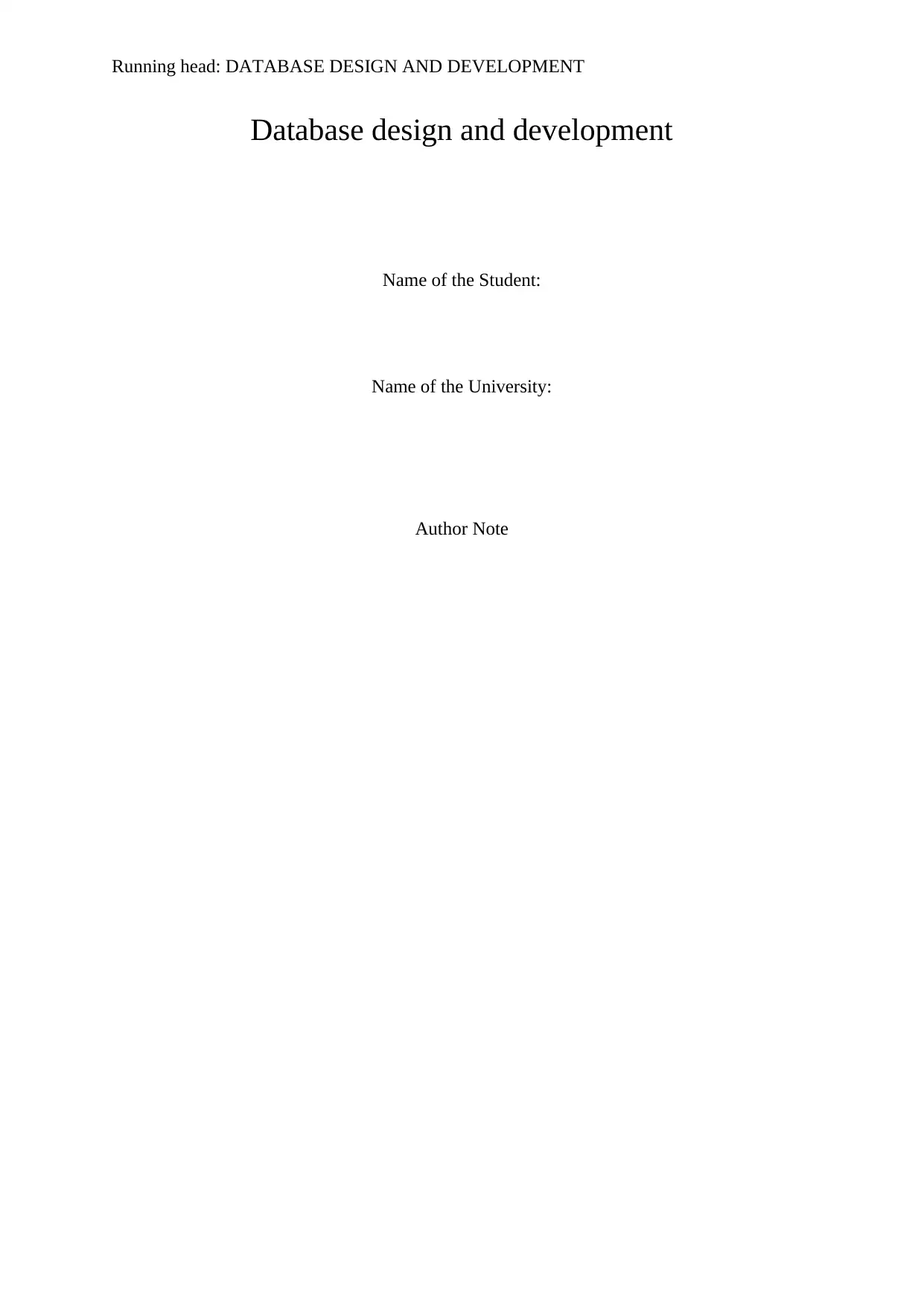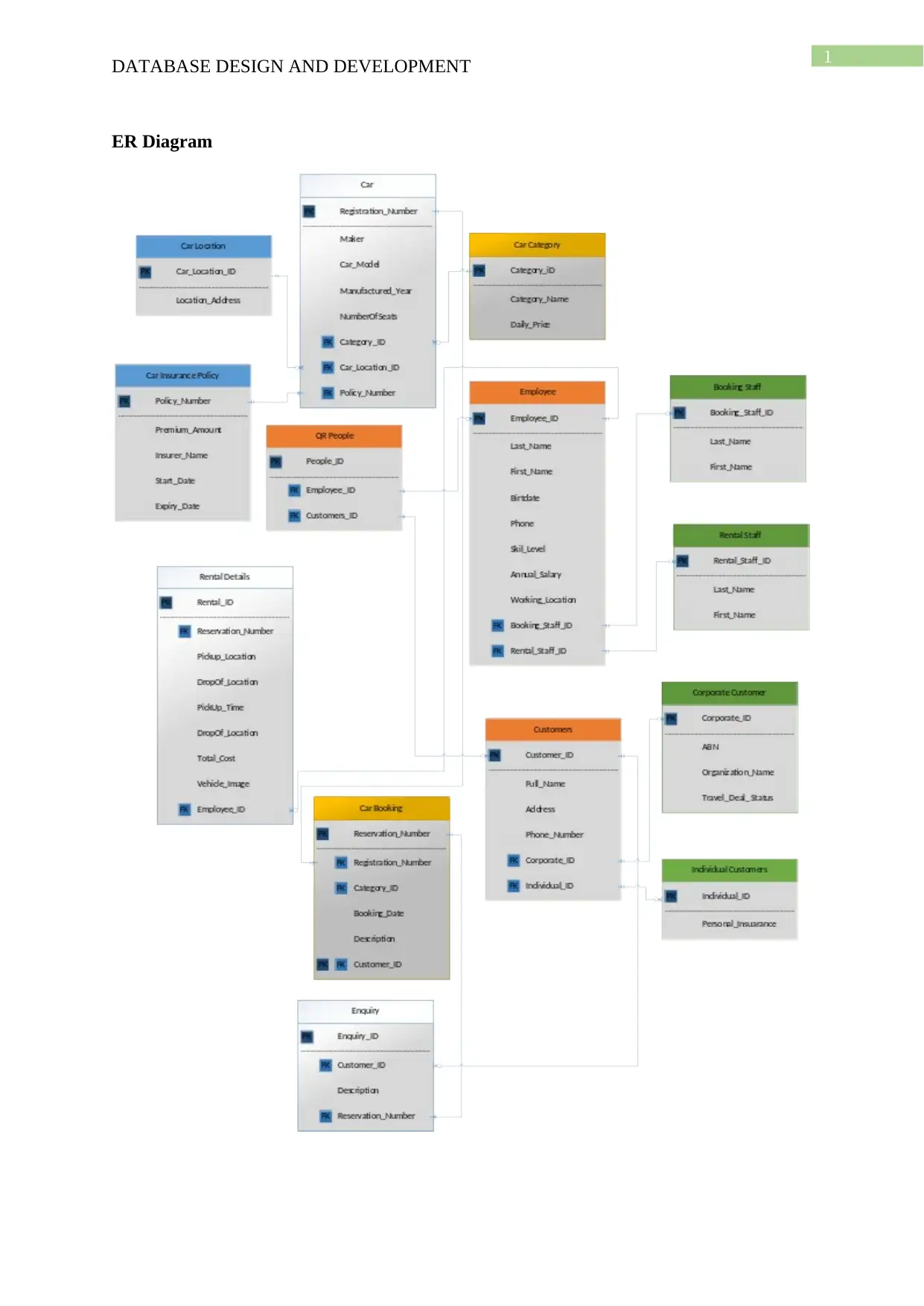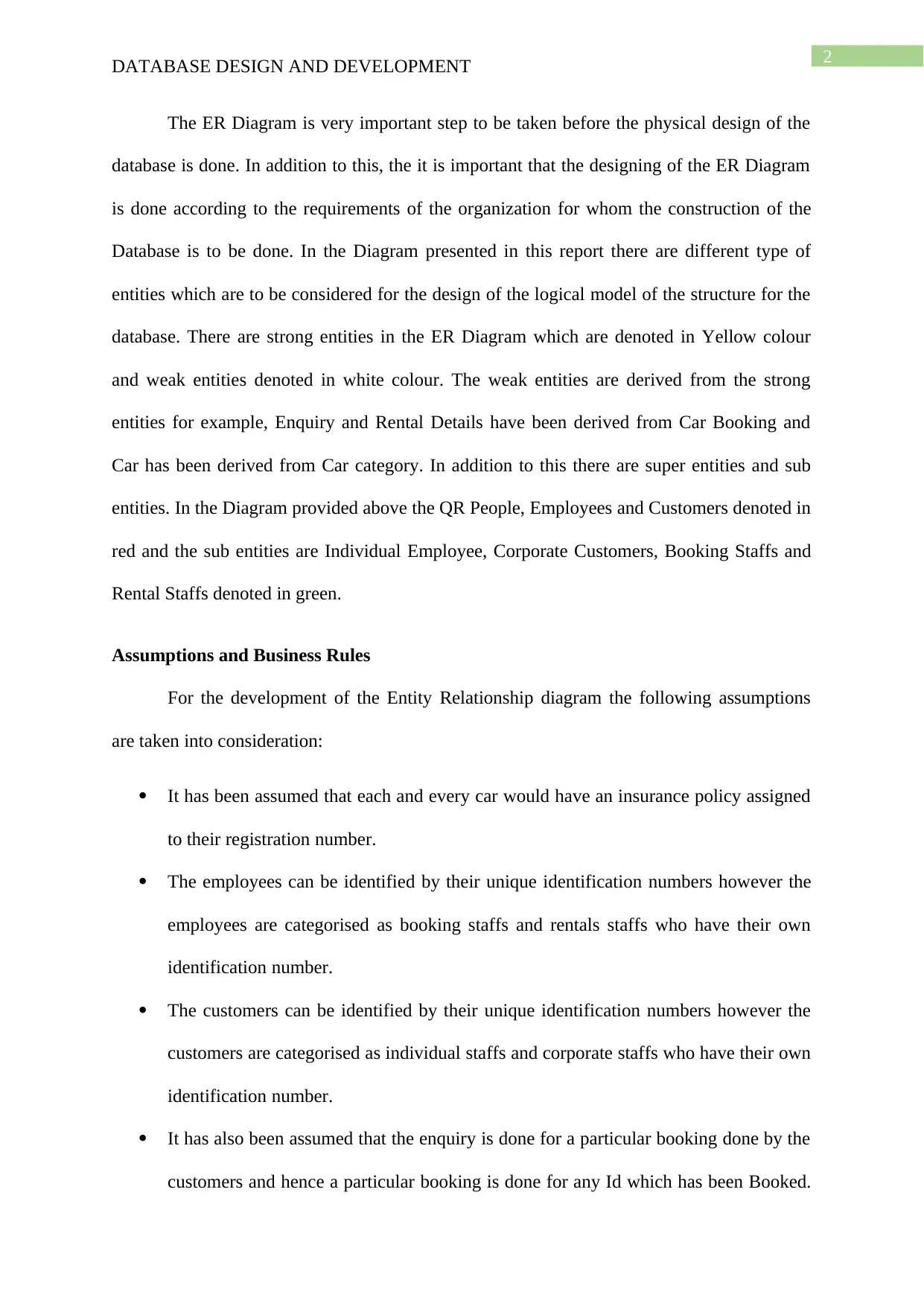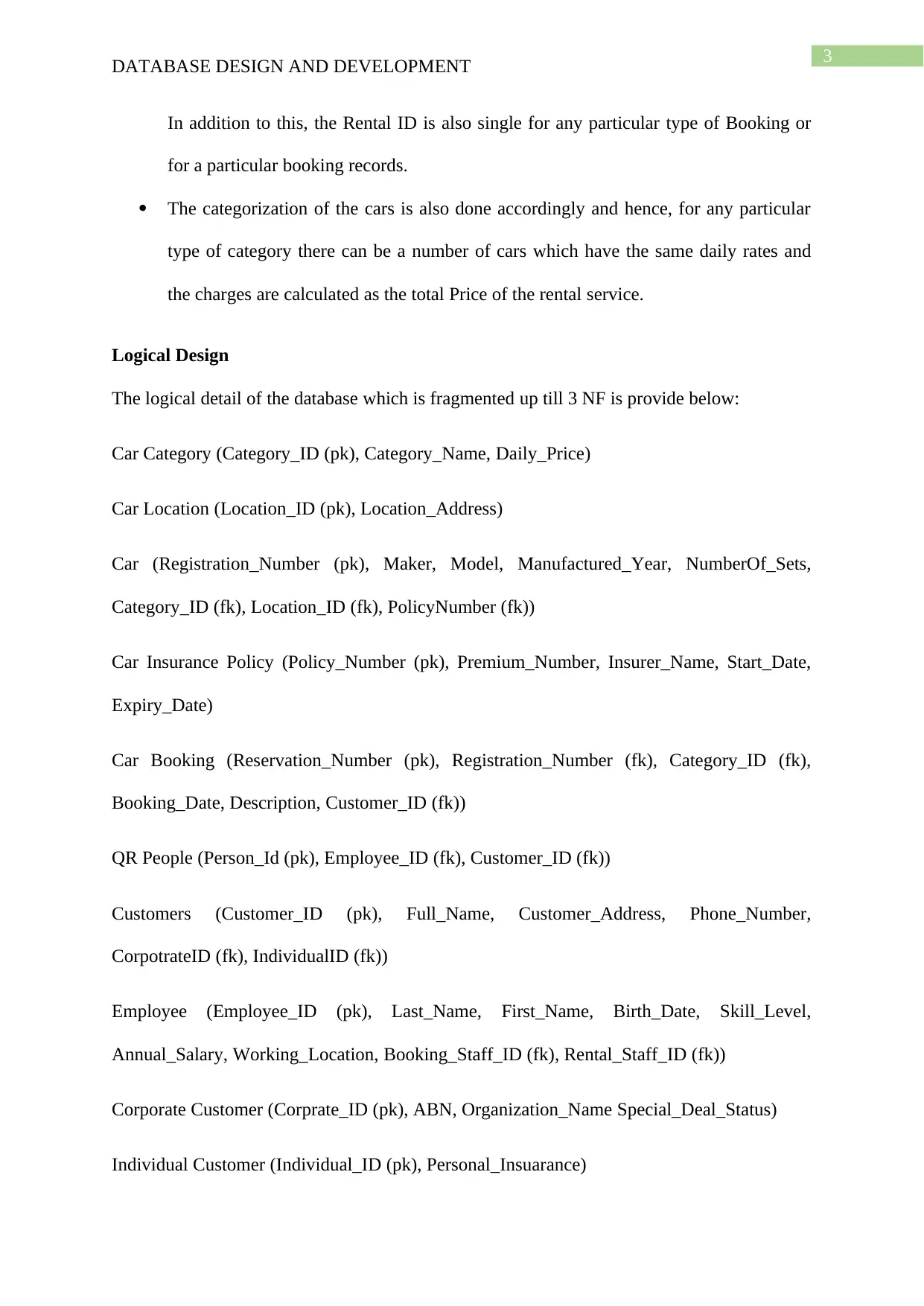Report on Database Design and Development for Car Rental System
VerifiedAdded on 2023/06/08
|6
|785
|478
Report
AI Summary
This report provides a comprehensive overview of the database design and development process for a car rental system. It includes an ER diagram illustrating the entities, relationships, and attributes within the database, such as car categories, car locations, insurance policies, bookings, customers, and employees. The report outlines the assumptions and business rules considered during the design phase, such as insurance policy assignments for each car, unique identification of employees and customers, and the relationship between bookings and rentals. Furthermore, the logical design of the database is presented, detailing the tables and their attributes up to the 3NF normalization level, including primary and foreign key relationships. The bibliography lists relevant sources used in the design process. Desklib offers a wealth of similar solved assignments and past papers for students.
1 out of 6











![[object Object]](/_next/static/media/star-bottom.7253800d.svg)